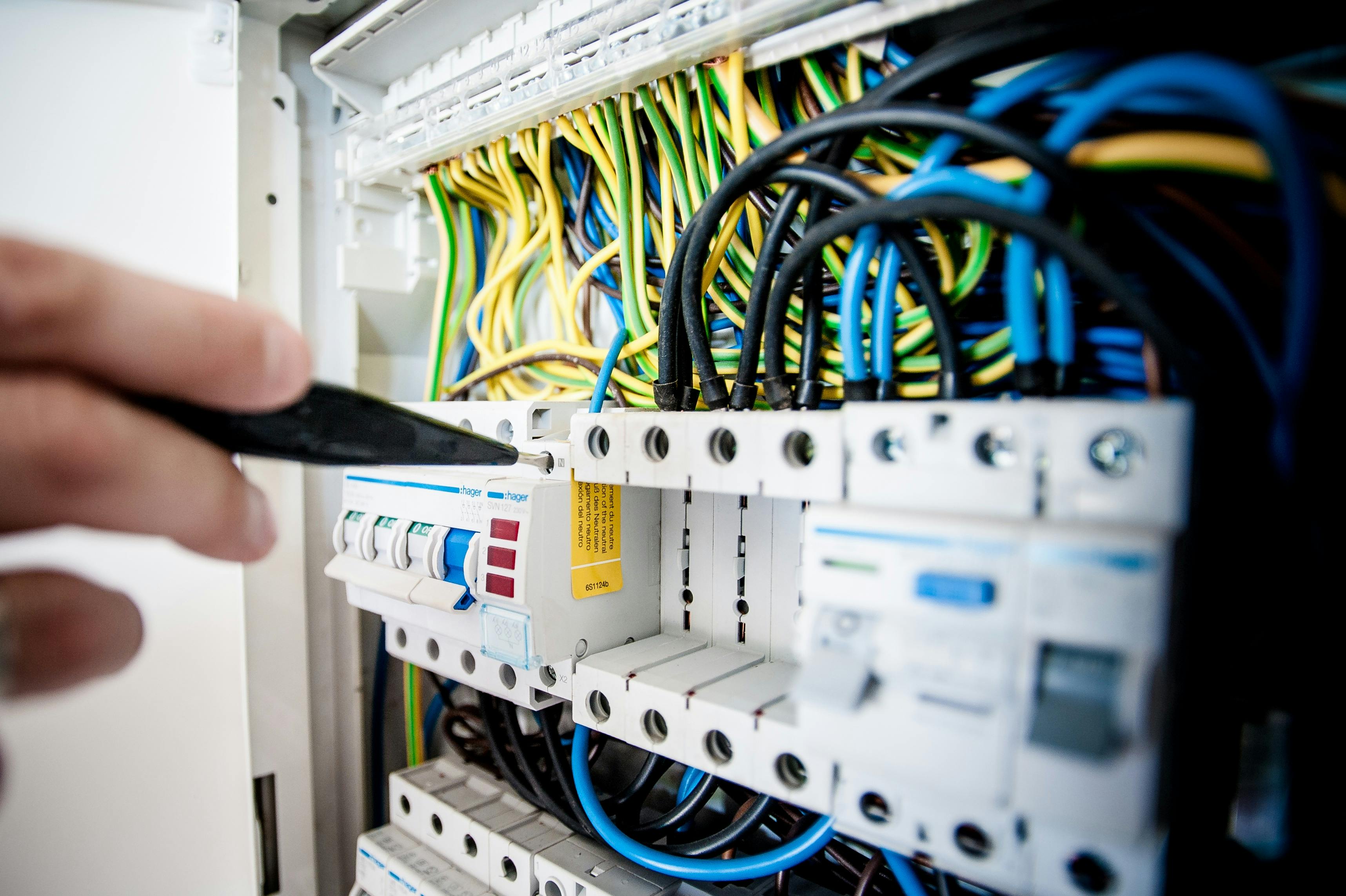
What is Spot Price? Understanding Real-Time Market Pricing
Comprehensive guide to spot pricing in financial markets. Learn how spot prices work, why they matter, and how to use them for smarter trading decisions across all asset classes.
In the fast-paced world of financial markets, understanding spot price is crucial for anyone involved in trading commodities, cryptocurrencies, stocks, or currencies. Whether you're a seasoned trader or just starting your investment journey, grasping the concept of spot pricing can significantly impact your trading decisions and overall market understanding.
This comprehensive guide will walk you through everything you need to know about spot prices: what they are, how they work, why they matter, and how you can use this knowledge to make more informed trading decisions across various asset classes.
Spot Price at a Glance
Settlement
Immediate
1-2 business days
Price Type
Real-Time
Current market value
Key Difference: Spot price is for immediate delivery, while futures price is for future delivery.
What is Spot Price?
The spot price, also known as the "spot rate" or "cash price," is the current market price at which a particular asset can be bought or sold for immediate delivery and payment. Unlike futures contracts or forward agreements that involve delivery at a future date, spot transactions are settled "on the spot" – typically within one to two business days depending on the asset class.
Think of spot price as the "right now" price of an asset. It's what you would pay if you walked into the market today and wanted to purchase an asset immediately. This real-time pricing mechanism forms the foundation of price discovery in financial markets worldwide.
The Mechanics of Spot Pricing
Spot prices are determined through continuous trading in spot markets, where buyers and sellers come together to execute immediate transactions. These prices fluctuate constantly based on real-time supply and demand dynamics, making them one of the most volatile yet transparent indicators of market sentiment.
In modern electronic markets, spot prices update in milliseconds, reflecting the latest completed transaction or the midpoint between the highest bid (what buyers are willing to pay) and the lowest ask (what sellers are willing to accept).
Spot Price vs. Futures Price: Understanding the Difference
One of the most common questions in trading is: "What's the difference between spot price and futures price?" Understanding this distinction is essential for navigating financial markets effectively.
Spot Price Characteristics
- Immediate Settlement: Transaction completed within 1-2 business days
- Current Market Value: Reflects the asset's value right now
- Physical or Digital Delivery: Actual transfer of the asset occurs
- No Storage Costs: Once purchased, any storage or holding costs are borne by the buyer
- Pure Market Forces: Driven primarily by current supply and demand
Futures Price Characteristics
- Future Settlement: Transaction settles at a predetermined future date
- Expected Future Value: Reflects what the market expects the asset to be worth later
- Contractual Obligation: Legal agreement to buy or sell at a specific future date
- Includes Carrying Costs: Factors in storage, insurance, and opportunity costs
- Speculation Component: Includes market expectations and sentiment about future conditions
The Relationship: Contango and Backwardation
The relationship between spot and futures prices reveals important market dynamics:
Contango occurs when futures prices are higher than spot prices. This is common in stable markets where carrying costs (storage, insurance, interest) make future delivery more expensive than immediate purchase. For example, gold futures typically trade in contango because of storage and insurance costs.
Backwardation happens when futures prices are lower than spot prices. This usually indicates immediate supply shortages or strong current demand, where market participants value immediate possession more highly than future delivery. This often occurs in commodity markets during supply disruptions.
Spot Price Across Different Asset Classes
Spot pricing works differently across various financial instruments. Let's explore how spot prices function in different markets:
Precious Metals (Gold, Silver, Platinum)
The precious metals market is perhaps the most well-known spot market. The spot price of gold, for instance, is quoted internationally and serves as the benchmark for all gold transactions worldwide. These prices are determined by continuous trading on major exchanges like the London Bullion Market Association (LBMA) and COMEX.
Key factors affecting precious metal spot prices include:
- Global economic uncertainty and safe-haven demand
- Currency fluctuations, especially the US dollar
- Central bank policies and interest rates
- Industrial and jewelry demand
- Mining production and supply constraints
Cryptocurrencies
Cryptocurrency spot markets operate 24/7, providing continuous price discovery. When you buy Bitcoin or Ethereum on an exchange for immediate delivery to your wallet, you're paying the spot price. Unlike traditional assets, crypto spot markets never close, leading to potentially higher volatility but also greater trading flexibility.
Crypto spot prices are influenced by:
- Trading volume and liquidity across exchanges
- Regulatory news and government policies
- Technological developments and network upgrades
- Market sentiment and social media trends
- Institutional adoption and investment flows
Commodities (Oil, Natural Gas, Agricultural Products)
Commodity spot markets determine prices for immediate delivery of physical goods. The spot price of crude oil, for example, is crucial for refineries that need immediate supply, while agricultural spot prices affect farmers, processors, and food manufacturers.
Commodity spot prices respond to:
- Weather conditions and seasonal patterns
- Geopolitical events and supply disruptions
- Production levels and inventory data
- Global economic growth and demand
- Transportation costs and logistics
Foreign Exchange (Forex)
In forex markets, the spot rate represents the current exchange rate for immediate currency conversion. If you need to exchange US dollars for euros today, you'll use the spot rate. These rates are quoted in pairs (like EUR/USD) and fluctuate constantly based on global economic conditions.
Currency spot rates are driven by:
- Interest rate differentials between countries
- Economic data releases and growth indicators
- Political stability and government policies
- Trade balances and capital flows
- Central bank interventions and monetary policy
Why Spot Price Matters for Your Trading Success
Understanding spot price isn't just theoretical knowledge—it directly impacts your bottom line as a trader or investor. Here's why mastering spot price is essential in real-world markets:
- Avoid Overpaying: Knowing the true spot price prevents you from accepting inflated exchange rates or dealer markups. The difference between spot price and what you pay can significantly erode returns over time.
- Optimal Trade Execution: By understanding spot prices across multiple platforms, you can execute trades where liquidity is deepest and prices are most favorable, saving money on every transaction.
- Risk Management: Spot prices serve as the foundation for hedging strategies. Businesses use spot-futures spreads to lock in profits and manage commodity exposure.
- Market Timing: Rapid spot price movements often signal major market shifts before they become obvious. Monitoring spot prices helps you stay ahead of trends.
- Arbitrage Profits: Price discrepancies between exchanges create arbitrage opportunities that can only be spotted by comparing real-time spot prices across platforms.
In volatile markets, the spot price tells you what's happening right now—not projections or expectations, but actual market clearing prices. This real-time transparency is invaluable for making split-second trading decisions and long-term strategic moves alike.
1. Real-Time Market Transparency
Spot prices provide the most transparent view of an asset's current value. They reflect actual transactions happening right now, not speculation about future prices. This transparency helps you make informed decisions based on current market conditions rather than projections or estimates.
2. Arbitrage Opportunities
Traders use spot prices to identify arbitrage opportunities – situations where the same asset trades at different prices in different markets. By buying at the lower spot price and selling at the higher one, traders can profit from these temporary inefficiencies. For example, cryptocurrency traders often exploit price differences between exchanges.
3. Hedging and Risk Management
Businesses and investors use spot prices as a reference point for hedging strategies. By comparing spot prices with futures prices, they can determine the best way to protect against price volatility. A mining company, for instance, might lock in futures contracts when spot prices are favorable to protect against future price drops.
4. Portfolio Valuation
For investors holding physical assets or securities, spot prices determine the current market value of their holdings. This is crucial for accurate portfolio valuation, risk assessment, and performance tracking. Your gold holdings, crypto wallet, or commodity positions are valued at spot prices.
5. Market Sentiment Indicator
Rapid changes in spot prices often signal shifting market sentiment. A sudden spike in gold spot prices might indicate increased economic uncertainty, while a drop in oil spot prices could signal oversupply or weakening demand. Monitoring these movements helps you stay ahead of market trends.
Factors That Influence Spot Prices
Spot prices don't exist in a vacuum – they're influenced by numerous interconnected factors. Understanding these drivers helps you anticipate price movements and make better trading decisions.
Supply and Demand Dynamics
The most fundamental driver of spot prices is the balance between supply and demand. When demand exceeds supply, spot prices rise. When supply exceeds demand, prices fall. This relationship plays out differently across asset classes but remains the core principle.
Geopolitical Events
Political instability, wars, trade disputes, and sanctions can dramatically impact spot prices. The 2022 Russia-Ukraine conflict, for example, caused massive spikes in spot prices for oil, natural gas, wheat, and other commodities due to supply disruptions and market uncertainty.
Economic Indicators
Economic data releases like GDP growth, employment figures, inflation rates, and manufacturing indices all influence spot prices. Strong economic data typically supports commodity demand and can strengthen currencies, while weak data often has the opposite effect.
Central Bank Policies
Interest rate decisions, quantitative easing programs, and other monetary policy tools significantly impact spot prices. Lower interest rates generally support commodity and asset prices by making borrowing cheaper and reducing the opportunity cost of holding non-yielding assets like gold or Bitcoin.
Market Liquidity
The depth and liquidity of a market affect spot price stability. Highly liquid markets like major currency pairs or large-cap cryptocurrencies tend to have more stable spot prices, while illiquid markets can experience dramatic price swings from relatively small trades.
Seasonal Patterns
Many commodities exhibit seasonal spot price patterns. Natural gas prices often spike in winter due to heating demand, while agricultural products follow harvest cycles. Recognizing these patterns can help you time your trades more effectively.
How to Track and Use Spot Prices Effectively
Now that you understand what spot prices are and why they matter, let's discuss how to monitor and leverage them in your trading strategy.
Choosing Reliable Data Sources
Not all spot price data is created equal. Use reputable platforms that aggregate data from multiple sources and provide real-time updates. For cryptocurrencies, platforms like SpotMarketCap offer comprehensive spot price tracking across numerous exchanges. For traditional assets, Bloomberg, Reuters, and exchange-specific feeds provide authoritative pricing data.
Understanding Bid-Ask Spreads
The quoted spot price often represents the midpoint between bid (buy) and ask (sell) prices. The difference between these – the bid-ask spread – represents the transaction cost of trading. Narrower spreads indicate more liquid markets and lower trading costs.
Setting Price Alerts
Most trading platforms allow you to set alerts when spot prices reach certain levels. This helps you capitalize on opportunities without constantly monitoring the market. Set alerts for both upside and downside movements to catch trends early.
Analyzing Historical Spot Price Data
Study historical spot price patterns to identify support and resistance levels, seasonal trends, and volatility patterns. This historical context helps you interpret current price movements and make more informed predictions about future trends.
Comparing Across Exchanges and Platforms
Different exchanges or platforms may quote slightly different spot prices due to regional demand, liquidity differences, or technical factors. This is especially true in cryptocurrency markets. Comparing prices across platforms can reveal arbitrage opportunities or help you get the best execution price.
Common Mistakes to Avoid When Trading at Spot Prices
Even experienced traders make mistakes when dealing with spot prices. Here are common pitfalls to avoid:
Ignoring Transaction Costs
The quoted spot price isn't always what you'll pay. Trading fees, exchange commissions, network fees (for crypto), and bid-ask spreads all affect your actual execution price. Always factor in total costs when evaluating trades.
Confusing Spot and Derivatives Prices
Many platforms display both spot and futures prices. Make sure you're looking at the right one for your intended trade. Accidentally trading a futures contract when you meant to buy spot (or vice versa) can lead to unexpected outcomes.
Overreacting to Short-Term Volatility
Spot prices can fluctuate rapidly, especially in volatile markets. Don't let short-term spikes or drops trigger emotional decisions. Stick to your trading plan and use appropriate risk management tools like stop-losses.
Neglecting Market Hours and Liquidity
Some markets have specific trading hours, and liquidity can vary dramatically. Trading during low-liquidity periods can result in worse execution prices and higher slippage. Plan your trades when markets are most active.
Failing to Consider Storage and Carrying Costs
When buying physical commodities at spot prices, don't forget about storage, insurance, and transportation costs. These can significantly impact your total investment cost and should factor into your decision-making.
The Future of Spot Pricing
Spot pricing continues to evolve with technological advancement and market innovation. Here are some trends shaping the future:
Increased Automation and Algorithmic Trading
High-frequency trading algorithms now dominate many spot markets, executing thousands of trades per second based on minute price movements. This has increased market efficiency but also volatility in some cases.
Decentralized Finance (DeFi) and On-Chain Spot Trading
Blockchain technology is enabling truly decentralized spot markets where trades settle instantly without intermediaries. DeFi protocols are creating new spot markets for tokenized versions of traditional assets, expanding access and reducing friction.
Real-Time Global Price Discovery
As markets become more interconnected and technology improves, price discovery happens faster and more efficiently across global markets. This reduces regional price disparities and improves overall market efficiency.
Integration of Alternative Data
Spot prices increasingly incorporate alternative data sources like satellite imagery, shipping data, and social media sentiment. This creates more comprehensive price discovery mechanisms that reflect a wider range of market factors.
Key Takeaways
Let's summarize the essential points about spot prices:
- Spot price is the current market price for immediate delivery – the "right now" price of an asset
- Spot prices differ from futures prices, which reflect expected future values and include carrying costs
- Different asset classes have unique spot market characteristics, from 24/7 crypto markets to seasonal commodity patterns
- Spot prices provide real-time market transparency and serve as the foundation for price discovery
- Multiple factors influence spot prices, including supply/demand, geopolitical events, economic data, and market sentiment
- Understanding bid-ask spreads, transaction costs, and market liquidity is crucial for effective spot trading
- Use reliable data sources and tools to track spot prices across multiple platforms and exchanges
- Avoid common mistakes like ignoring transaction costs, confusing spot and futures prices, or overreacting to volatility
Related Topics on SpotMarketCap
Conclusion
Spot pricing forms the backbone of modern financial markets, providing real-time, transparent price discovery for assets ranging from precious metals to cryptocurrencies. Whether you're a day trader executing rapid transactions, a long-term investor building a portfolio, or a business hedging commodity exposure, understanding spot prices is essential for making informed decisions.
The beauty of spot markets lies in their simplicity and transparency – they tell you exactly what an asset is worth right now, based on actual transactions between real buyers and sellers. This real-time pricing mechanism enables efficient markets, facilitates global trade, and empowers individuals to participate in financial markets with confidence.
As markets continue to evolve with new technologies like blockchain, artificial intelligence, and decentralized finance, spot pricing will remain fundamental to how we determine value and execute transactions. By mastering the concepts in this guide, you're better equipped to navigate these markets, identify opportunities, and manage risk effectively.
Remember: successful trading isn't just about understanding spot prices – it's about using that knowledge wisely, managing your risk appropriately, and making decisions based on sound analysis rather than emotion. Start by tracking spot prices for assets you're interested in, observe how they respond to various market conditions, and gradually develop your own trading strategies based on real-world experience.
Stay informed, trade responsibly, and let spot prices guide you toward smarter investment decisions in an ever-changing financial landscape.
Track Real-Time Asset Prices
Get instant access to live cryptocurrency, stock, ETF, and commodity prices. All assets in one powerful dashboard.
Related Articles

What is Copper Backwardation? Supply Tightness Signal
Learn copper backwardation—the powerful supply tightness indicator in metals markets. Discover what drives backwardation, how to identify it, and trading strategies to profit from this condition.

What are Copper Warehouse Stocks? Inventory Tracking
Master copper warehouse stocks—the key indicator of physical copper availability. Learn how LME inventories signal market tightness and influence copper prices globally.

What is Aluminum Premium? Regional Pricing Explained
Understand aluminum regional premiums—the additional cost above LME prices for physical delivery. Learn how US Midwest, European, and Asian premiums reflect local supply-demand dynamics.